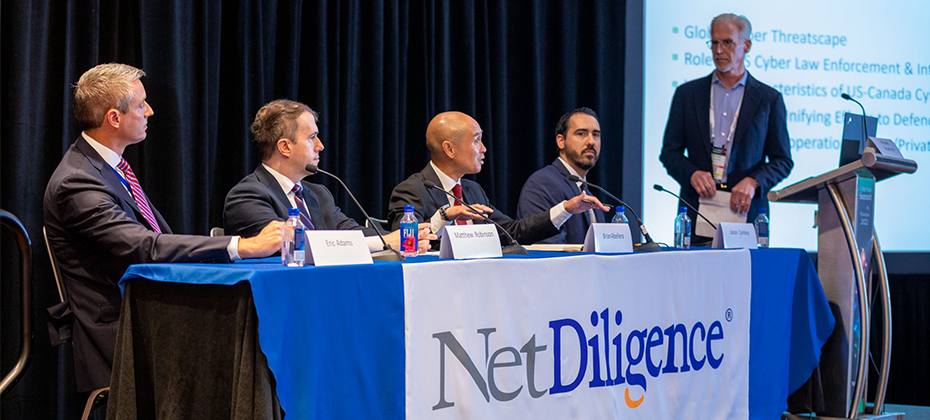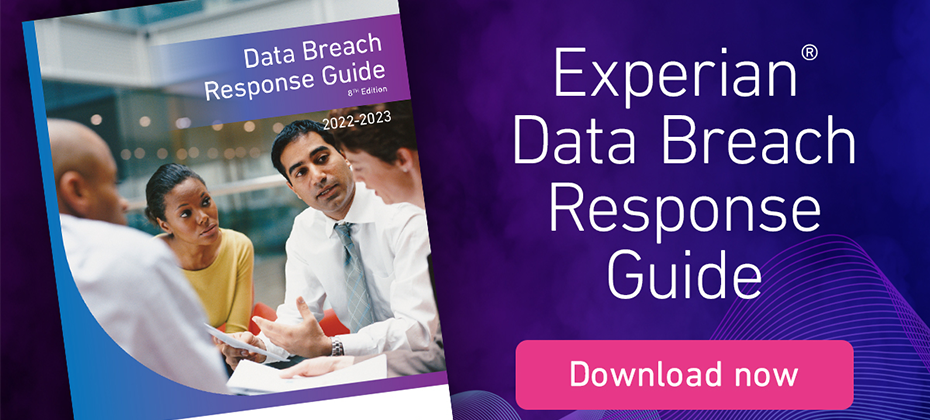Latest Posts

As competition for used vehicles remains fierce, dealers must make quick decisions on whether to acquire a potential vehicle—or someone else will. Whether you need to evaluate a trade-in or want to make a flat-out offer on a vehicle, quickly accessing the vehicle’s history is only the first step. What if you could determine the likelihood that a vehicle will be on the road in five years and compare it to other similar vehicles? Would this help in your decision-making? Use the AutoCheck Score to evaluate vehicles for your lot The patented AutoCheck ScoreSM was developed to help dealers determine the likelihood that a vehicle will be on the road in five years. The AutoCheck Score summarizes vehicle history data into an easy-to-understand “score” and provides an equivalent score range. Understanding the likelihood that a unit will still be on the road in five years gives dealers more perspective on a vehicle’s desirability and can help you accurately price it. Use the AutoCheck Score to more accurately merchandise vehicles The AutoCheck Score range will give you similarly aged and classed vehicles for comparison that you can use to help merchandise the vehicle for market and help manage consumer conversations regarding the vehicle’s price. How does the AutoCheck Score work? The AutoCheck Score analyzes various characteristics, including age, segment, mileage, number of owners, vehicle use, vehicle events, accidents, theft, and title brands. Essentially, this score summarizes the AutoCheck Vehicle History Report fields and delivers a “score range” that allows you to compare the actual vehicle (score) to other similarly aged and classed vehicles. The score is based on a scale of 1 to 100, but reading the score in conjunction with the score range is essential since looking at the score without knowing the range will reveal only half the story. Check out the example below. Car #1 has a lower score than Car #2. However, look at the score ranges (73-86). For Car #1, other comparable vehicles should fall into a range from 73 to 86, and this car scored an 84. That means the vehicle is within the AutoCheck Score range compared to other similar cars of the same age and class. Car #2 has a score of 89. Because this is higher than Car #1’s score, you might assume this car has a more favorable vehicle history, but that’s not entirely accurate. Comparable vehicles should score in a range from 90 to 95, and this car falls short. That means the car’s history is slightly less favorable compared to similar vehicles of the same age and class. In today’s competitive environment though, dealers may decide to take in both trades, and the AutoCheck Score can also help make decisions on how to price the vehicles for market. Become an AutoCheck member today As an AutoCheck subscriber, you’ll have access to the AutoCheck Score. Between the large graphic display and the simple number comparison, the AutoCheck Score can help you make decisions on vehicle acquisition much quicker and easier!

According to Experian's State of the Automotive Finance Market Report: Q1 2022, SUVs and CUVs made up 60.38% of total vehicle financing, an increase from 58.95% in Q1 2021.

This post was updated in 2022. Fraud prevention can seem like a moving target. Criminals often shift from one scheme to the next, forcing organizations to play catch up to protect consumers’ identities and funds. But with the right technology, it’s possible to implement a fraud solution that provides protection and enhances the consumer journey. The pandemic fraud boom Government stimulus funds, COVID-19 testing and the loosening of business controls were a boon for criminals and levied an immense cost against businesses and consumers. Consumer fraud losses rose to $3.3 billion in 2020, up from $1.8 billion in 2019. The rapid increase in digital activity had two significant impacts. First, it shifted new account applications to the digital channel, where increased anonymity favors fraudsters by creating an environment where identity thieves could hide among the immense volume of applicants and monetize stolen personally identifiable information (PII). Second, it fueled account takeover (ATO) attacks by introducing digital “newbies” with unsophisticated password habits and limited ability to recognize and protect themselves from malware or social engineering, making them easy targets for credential theft. The return of old-school fraud Now that businesses and consumers are growing wise to some of the fraud schemes brought on by the COVID-19 pandemic, criminals are turning to new avenues, including tried-and-true methods like account opening and ATO fraud. New account fraud is expected to cost U.S. financial institutions $3.5 billion in 2021 alone. Fraud organizations will take the PII available and match it with automated tools to increase their efficiency and success rates while continuing with phishing and other schemes to gain new information that can fuel further attacks. Building a fraud solution Staying ahead of fraudsters may feel like a losing proposition but equipped with the proper fraud controls, you can enhance the customer experience, increase operational efficiency and protect against developing fraud schemes. With a fraud solution that uses multiple tools in concert, it’s possible to recognize, verify and holistically risk assess most consumers that pass through your portfolio. The right platform — ideally one that can call upon different services to perform each job — will enable your organization to flag suspicious activity, increase insight into large-scale attacks, track risky users and break down traditional internal silos. By coordinating efforts and adding multiple touchpoints to run both in the foreground and background, you can ensure the right friction is applied at the right time without diminishing the end-user experience. In fact, by improving your recognition tools, you can make the experience for recognized, legitimate customers even easier. To learn more about the potential impacts of traditional fraud and how your organization can leverage a fraud prevention solution to achieve your retention and growth goals, read our latest white paper or request a call. Read white paper Schedule a call

Mortgage lenders are no stranger to income and employment verification. Leveraging a third-party solution provider for automated verifications is a standard practice in mortgage underwriting. Yet many lenders still struggle with time-consuming and complex verification experiences, which can be manual, inefficient and painful for borrowers. Since introducing Experian Verify™ to the market, we’ve had countless conversations with key players in the industry – from the largest banks to small independent mortgage brokers and everything in between. Through these conversations, we’ve learned quite a bit about some of the dos and don’ts when it comes to implementing a successful strategy for income and employment verification for mortgage. Lead with instant verification Digital transformation has forever changed borrower expectations for online experiences. The first key to a successful verification strategy is starting your workflow with an instant verification solution. This allows you to verify information in real time, delivering a completely frictionless experience for you and your borrowers. Consider building a waterfall process For instances when a borrower’s income and employment information is unable to be verified through an instant verification solution, add a consumer-permissioned (bank or payroll) option as a backup. Cascading from one digital solution to the next will ensure you can verify borrower information in seconds or minutes, as opposed to days or weeks. The goal is to prevent as many borrowers as possible from going through a costly manual process. Tap into unique data sources Many verification solutions in market today tap into the same data sources, which can make it difficult to differentiate between solutions and measure additive benefits. When evaluating options, look for verification solutions that leverage unique and exclusive data sources – allowing you to optimize hit rates and maximize value. Avoid a “one-size-fits-all” approach There is no silver bullet. Every market is unique and every lender has different needs. Your verification requirements are likely specific to your business, which means you need to leverage verification solutions that offer flexible options and enable you to build a verification experience that works best for you and your borrowers. Find a solution provider who’s all in It’s important to find a solution provider where income and employment verification isn’t just a “side hustle,” but is core to their business strategy. Find a provider who is fully committed – delivering new innovations, investing in key partnerships, maximizing accessibility through leading LOS / POS technology providers, and offers eligibility for key industry programs, such as Day 1 Certainty® from Fannie Mae. Challenge the status quo Many lenders have an existing relationship with a third-party solution provider. But it’s important not to put all your eggs in one basket. If your existing provider is not meeting all your needs, challenge the status quo. Consider adding a second provider to the top of your waterfall to help contain costs and tap into unique data that is not available from your existing provider. Ready for further insight? Learn more about income and employment verification for mortgage.

To drive profitable growth and customer retention in today’s highly competitive landscape, businesses must create long-term value for consumers, starting with their initial engagement. A successful onboarding experience would encourage 46% of consumers1 to increase their investments in a product or service. While many organizations have embraced digital transformation to meet evolving consumer demands, a truly exceptional onboarding experience requires a flexible, data-driven solution that ensures each step of customer acquisition in financial services is as quick, seamless, and cohesive as possible. Otherwise, financial institutions may risk losing potential customers to competitors that can offer a better experience. Here are some of the benefits of implementing a flexible, data-driven decisioning platform: Greater efficiency From processing a consumer’s application to verifying their identity, lenders have historically completed these tasks manually, which can add days, if not weeks, to the onboarding process. Not only does this negatively impact the customer experience, but it also takes resources away from other meaningful work. An agile decisioning platform can automate these tedious tasks and accelerate the customer onboarding process, leading to increased efficiency, improved productivity, and lower acquisition costs2. Reduced fraud and risk Onboarding customers quickly is just as important as ensuring fraudsters are stopped early in the process, especially with the rise of cybercrime. However, only 23% of consumers are very confident that companies are taking steps to secure them online. With a layered digital identity verification solution, financial institutions can validate and verify an applicant’s personal information in real time to identify legitimate customers, mitigate fraud, and pursue growth confidently. Increased acceptance rates Today’s consumers demand instant responses and easy experiences when engaging with businesses, and their expectations around onboarding are no different. Traditional processes that take longer and require heavy documentation, greater amounts of information, and continuous back and forth between parties often result in significant customer dropout. In fact, 40% of digital banking consumers3 abandon opening an account online due to lengthy applications. With a flexible solution powered by real-time data and cutting-edge technology, financial institutions can reduce this friction and drive credit decisions faster, leading to more approvals, improved profitability, and higher customer satisfaction. Having a proper customer onboarding strategy in place is crucial to achieving higher acceptance and retention rates. To learn about how Experian can help you optimize your customer acquisition strategy, visit us and be sure to check out our latest infographic. View infographic Visit us 1 The Manifest, Customer Onboarding Strategy: A Guide to Retain Customers, April 2021. 2 Deloitte, Inside magazine issue 16, 2017. 3 The Financial Brand, How Banks Can Increase Their New Loan Business 100%, 2021.

“Businesses are managing vast and growing amounts of consumer data – all while ensuring consumers’ privacy and complying with complex government regulations.” This is one of the many reasons there’s an increasing need for innovative digital identity solutions, as explored in a in Axios in a new Experian advertorial. Experian Identity, an integrated suite of identity solutions, products, and services, solves for challenges presented by the continuing migration of consumers to the internet and the resulting growth of consumer data. Leveraging that data stemming from diverse sources and combining it with advanced technologies, is critical to better determining and understanding a company’s best marketing prospects, as well as making confident decisions that enhance and safeguard the consumer experience. How? By leveraging multidimensional data and adhering to all consumer protection laws and industry self-regulatory standards, businesses can best recognize and connect with their consumers in more personalized, meaningful and secure ways. The Axios article discusses the benefits of Experian Identity, including strengthening fraud detection, solving for identity resolution, and helping to uncover business opportunities through segmenting, targeting and engaging consumers. “While today’s consumers are intensely interested in protecting their personal data and identities, they also want to be recognized and understood by the companies they do business with,” said Kathleen Peters, Chief Innovation Officer of Experian Decision Analytics, in the article. Read more about how Experian’s identity solutions helps businesses stay relevant with audiences, create a positive consumer experience, and meet people’s desire to be recognized in Axios’ new article. AXIOS: Making identities personal Learn more about Experian Identity

Experian recently attended Fintech Nexus USA, formally known as LendIt Fintech USA, the leading event for innovation in financial services. The event was held at the Javits Center in New York City on May 25-26. This year’s event housed over 4,000 attendees, 350 speakers and 225 sponsors. Experian was a proud platinum sponsor and participated in two expert sessions. Day one Gasan Awad, Product Management Vice President for Experian Fraud and Analytics, led the session, “Frictionless Fraud Prevention: Fintech’s Balancing Act.” Gasan was joined by Ibo Dusi, Chief Risk Officer for Revolut, and Ashish Gupta, Chief Risk Officer for LendingPoint, to discuss the growing fraud landscape. “ Fraud is not slowing down; it is getting more complex as customers continue to grow their online and digital usage.” Gasan Award There has been $56 billion in identity fraud losses since 2020, $13 billion stemmed from traditional identity fraud and $43 billion from identity fraud scams. 53% of consumers say security is the most important aspect of their online experience. During the session, our experts delved into important questions, including: What fraud and identity-proofing strategies should you consider to prevent sophisticated attacks and balance ease of interactions? How do you detect fraudsters without disrupting the customer experience? Want more insight? Access the discussion here. Learn more about how Experian supports fintechs by visiting our fintech resources page, and how we’re helping businesses of all types stay guarded against fraud with our fraud prevention solutions. Day two Greg Wright, Executive Vice President and Chief Product Officer for Experian, joined Afterpay, Sunbit and Jifiti in the session, “Reconciling Responsible Buy Now Pay Later (BNPL) with the Need for Access.” BNPL industry fast facts: Last year in the U.S., 45 million Americans used BNPL. The number of U.S. users has grown 300% since 2018. Spending in the U.S. was $20.8B in 2021 and is forecasted to grow globally to $1T by 2025. Real-time data is critical for the BNPL industry. Greg provided insight into what Experian is doing to incorporate BNPL data into the lending ecosystem. Through The Buy Now Pay Later Bureau™, Experian plans to bring transparency to the BNPL and financial services industries. We are currently working with large BNPLs to support data furnishing of BNPL tradelines to the new bureau. “We figured out a way to work with the BNPL clients to bring BNPL data into the lending ecosystem to where it does not have an immediate impact on your credit score just because you chose to use a BNPL option rather than a credit card,” said Greg Wright. Typical lending risk models limit the accessibility of financing, but the nature of BNPL dictates that merchants and consumers need instant decision-making. Experian's response to the BNPL finance method is a consumer-friendly solution that supports end-to-end credit risk insights and point-of-sale financing solutions that do not fit into mainstream credit processes and aren’t adequately handled by traditional credit scores. This one-of-a-kind specialty bureau allows consumers to benefit from successful repayment behaviors and lenders of all types to drive more inclusive and responsible practices. Additionally, Experian has plans to make BNPL data visible on the core consumer credit profile. Ready to learn more? Access the discussion here. Discover how you can bring transparency to the industry with The Buy Now Pay Later Bureau and power innovative fintech lending solutions. Fintech resources The Buy Now Pay Later Bureau

These days, the call for financial inclusion is being answered by a disruptive force of new financial products and services. From fintech to storied institutional players, we're seeing a variety of offerings that are increasingly accessible and affordable for consumers. It's a step in the right direction. And beyond the moral imperative, companies that meet the call are finding that financial inclusion can be a source of business growth and a necessity for staying relevant in a competitive marketplace. A diaspora of credit-invisible consumers To start, let's put the problem in context. A 2022 Oliver Wyman report found about 19 percent of the adult population is either credit invisible (has no credit file) or unscoreable (not enough credit information to be scoreable by conventional credit scoring models). But some communities are disproportionately impacted by this reality. Specifically, the report found: Black Americans are 1.8 times more likely to be credit invisible or unscoreable than white Americans. Recent immigrants may have trouble accessing credit in the U.S., even if they're creditworthy in their home country. About 40 percent of credit invisibles are under 25 years old. In low-income neighborhoods, nearly 30 percent of adults are credit invisible and an additional 16 percent are unscoreable. Younger and older Americans alike may shy away from credit products because of negative experiences and distrust of creditors. Similarly, the Federal Deposit Insurance Corporation (FDIC) reports that an estimated 5.4 percent (approximately 7.1 million) households, were unbanked in 2019 — often because they can't meet minimum balance requirements or don't trust banks. Credit invisibles and unscoreables may prefer to deal in a cash economy and turn to alternative credit and banking products, such as payday loans, prepaid cards, and check-cashing services. But these products can perpetuate negative spirals. High fees and interest can create a vicious cycle of spending money to access money, and the products don't help the consumers build credit. In turn, the lack of credit keeps the consumers from utilizing less expensive, mainstream financial products. The emergence of new players Recently, we've seen explosive growth in fintech — technology that aims to improve and automate the delivery and use of financial services. According to market research firm IDC, fintech is expected to achieve a compound annual growth rate (CAGR) of 25 percent through 2022, reaching a market value of $309 billion. It's reaching mass adoption by consumers: Plaid® reports that 88 percent of U.S. consumers use fintech apps or services (up from 58 percent in 2020), and 76 percent of consumers consider the ability to connect bank accounts to apps and services a top priority. Some of these new products and services are aimed at helping consumers get easier and less expensive access to traditional forms of credit. Others are creating alternative options for consumers. Free credit-building tools. Experian Go™ lets credit invisibles quickly and easily establish their credit history. Likewise, consumers can use Experian Boost™ to build their credit with non-traditional payments, including their existing phone, utility and streaming services bills. Alternative credit-building products. Chime® and Varo® , two neobanks, offer credit builder cards that are secured by a bank account that customers can easily add or withdraw money from. Mission Asset Fund, a nonprofit focused on helping immigrants, offers a fee- and interest-free credit builder loan through its lending circle program. Cash-flow underwriting. Credit card issuers and lenders, including Petal and Upstart, are using cash-flow underwriting for their consumer products. Buy now, pay later. Several Buy Now Pay Later (BNPL) providers make it easy for consumers to pay off a purchase over time without a credit check. Behind the scenes, it's easier than ever to access alternative credit data1 — or expanded Fair Credit Reporting Act (FCRA)-regulated data — which includes rental payments, small-dollar loans and consumer-permissioned data. And there are new services that can help turn the raw data into a valuable resource. For example, Lift PremiumTM uses multiple sources of expanded FCRA-regulated data to score 96 percent of American adults — compared to the 81 percent that conventional scoring models can score with traditional credit data. While we dig deeper to help credit invisibles, we're also finding that the insights from previously unreported transactions and behavior can offer a performance lift when applied to near-prime and prime consumers. It truly can be a win-win for consumers and creditors alike. Final word There's still a lot of work to be done to close wealth gaps and create a more inclusive financial system. But it's clear that consumers want to participate in a credit economy and are looking for opportunities to demonstrate their creditworthiness. Businesses that fail to respond to the call for more inclusive tools and practices may find themselves falling behind. Many companies are already using or planning to use alternative data, advanced analytics, machine learning, and AI in their credit-decisioning. Consider how you can similarly use these advancements to help others break out of negative cycles. 1When we refer to “Alternative Credit Data," this refers to the use of alternative data and its appropriate use in consumer credit lending decisions, as regulated by the Fair Credit Reporting Act. Hence, the term “Expanded FCRA Data" may also apply in this instance and both can be used interchangeably.

Previously, the Global Identity and Fraud Report called for businesses to meet consumer expectations for online recognition and security while improving the digital experience. Organizations have answered this call with investments and new initiatives, but the fraud risk persists and consumers are relying on businesses to protect them. In our latest report, we explore the issues associated with siloed recognition processes, consumer expectations and preferences, and effective risk strategies. We surveyed more than 6,000 consumers and 1,800 businesses worldwide about this connection for our 2022 Global Identity and Fraud Report. This year’s report dives into: How online security yields engagement and trust with today’s digital consumers The role of businesses in protecting online consumers, and the associated benefits The current opportunity for businesses to implement multiple identity and fraud solutions The role that orchestration and outsourcing play in helping companies prevent fraud To earn consumer trust and loyalty, organizations need to leverage automated solutions to identify and protect consumers across their online journeys while providing seamless recognition and low-friction fraud prevention with a robust and flexible fraud platform. To learn more about our findings and how to implement an effective solution, download Experian’s 2022 Global Identity and Fraud Report. Read the report Review your fraud strategy

Last month my blog discussed how Building the Perfect Audience is Like Building the Perfect Burger! It was National Hamburger Month, so it seemed apropos! We offered marketers insight into building better audiences to help run more strategic marketing campaigns. This month, I am keeping with the monthly ‘holiday’ theme. June 20th was National American Eagle Day and being so close to our 4th of July holiday, I thought this was a perfect tie-in this month! You are probably wondering how I am going to tie in National American Eagle Day with another marketing strategy, but I promise you, I can! It’s all about having strategic insight into your customers and using an “eagle eye” to learn what you can about them to obtain better results from your marketing efforts. An eagle's-eye approach to finding and reaching the right consumers Here are a few fun facts about the great American Bald Eagle. Bald Eagles were placed at the center of the Great Seal of the United States in 1782! “Bald” in Bald Eagle refers to an old English word that means “white-headed.” We’ve all heard people talk about having an “eagle eye.” It’s true—this comes from the eagle’s astonishing eyesight. Eagles can see clearly and about eight times as far as humans can, allowing them to spot and focus on a rabbit or other prey at a distance of about two miles. Can you imagine? They can also look ahead and to the side simultaneously with a 340-degree visual field! Imagine if you had an eagle-eye, 340-degree view of your customers or prospects before running a marketing campaign. Well, you can. Experian data insights offers an eagle-eye approach to finding and reaching the right consumers at the right time in the buying journey to help you eliminate marketing waste and deliver a more significant return on your marketing spend. Understanding your customers is key With Experian’s Insights solution, as part of our comprehensive Experian Marketing Engine, we offer OEM marketers, agencies, and larger dealer groups access to multiple Insight categories to learn more about your customers. Understanding your current customers or the segment of prospects you would like to target allows for a more strategic approach to marketing campaigns. Our brand, model, registration, title, finance, market analysis, lifestyle, and household insights can help you take a 360-degree view of your customer (that's right, 360 degrees, 20 degrees more than an eagles eye!) There’s a lot of discuss here, so we’ve put together a complimentary resource, Understand Your Customer Before Choosing Your Audience that explains all the ways you can use Insights to learn more about your customers. What is the Experian Marketing Engine? Insights is part of the Experian Marketing Engine marketing solution that helps automotive marketers, manufacturers, advertisers, agencies, and platforms identify the right audience, uncover the most appropriate communication channels, develop messages that resonate, and measure the effectiveness of marketing activities.

According to Experian’s State of the Automotive Finance Market Report: Q1 2022, credit unions had their highest total share in five years

The Threat “With criminals, there’s no such thing as a border anymore. They don’t care where you are, who you are; if there’s money to take from you, they will take it.” That’s what U.S. Secret Service Agent Eric Adams had to say when asked about cybersecurity threats during the “Global Cyber Threatscape & the Role of Law Enforcement” panel I moderated at the latest NetDiligence CyberRisk Summit event. It’s clear to law enforcement that cybercriminals are hyper-connecting, deep information sharing, and crossing virtual borders—becoming more brazen (and clever) by the breach—leaving businesses, insurers, organizations, regulators, and consumers in the cross hairs of compromise, compliance, and recoupment. “We work with law enforcement; we work with insurance companies. We’re collecting data and trying to solve those problems because we understood that if you don’t cooperate before the incident, you don’t work together [at all].” – Michael Bruemmer, Experian During the “Beyond the Arrest: Law Enforcement Roundtable,” Adams and three other cross-border experts, Brian Abellera, Jason Conboy, and Matt Robinson, gave in-depth accounts of “cross-border incident response and the role of U.S. cyber law enforcement and oversees intelligence.” “We’re seeing smaller and medium-sized businesses [being targeted by ransomware]. We are really struggling to keep up with the information flow.” – Matt Robinson, RCMP I frequently talk about how quickly the threats are evolving and how Every Minute Counts in data breach response. The panel echoed this sentiment tenfold, covering five key topics, including “Unique Characteristics of U.S.-Canada Cyber” and “Public-Private International Cooperation.” The Evidence Board “We have to be nimble like the cybercriminals; putting in cyber liaisons internationally.” – Jason Conboy, U.S. Department of Homeland Security Investigations From stem swapping, ransomware revictimization, and romance schemes, the experts discussed how cross-border threats are infiltrating every square inch of the data security landscape. They also focused on the critical role of education, tabletop exercises, and timely incident reporting while zeroing in on how public-private partnerships can influence better outcomes and impact data protection, regulation, and litigation. Watch the full NetDiligence Cyber Risk Summit session on-demand

When acquiring inventory for your used lot, using AutoCheck Vehicle History Reports is like an ‘insurance’ policy! As the industrial-strength vehicle history report, AutoCheck helps dealers manage risk and confidently buy and sell more of the right vehicles. We’re so confident in our solution that we offer buyback protection. When is AutoCheck Buyback Protection available? AutoCheck Buyback Protection is available for vehicles with an AutoCheck vehicle history report if a certain title brand is found after the vehicle is reported to be free of the brand. AutoCheck Buyback Protection provides: A full year of coverage to protect consumers from major title problems that the Department of Motor Vehicles may have missed Coverage for the purchase price of the vehicle (up to 110% of the NADAguides.com published retail value) PLUS up to $500 in aftermarket accessories Title brands covered by the Buyback Protection plan include: Junk or salvage Dismantled, rebuilt, or reconstructed Flood damage Hail damage Fire damage Bought back by the manufacturer (“lemon law”) Odometer exceeds mechanical limits Odometer was not actual mileage How do consumers take advantage of AutoCheck Buyback protection? Consumers must register for AutoCheck Buyback protection within 90 days of the vehicle purchase date The AutoCheck report must have been run before purchasing the vehicle Consumers must provide a copy of the front and back of the branded title certified by the issuing state. The branded title must have been issued at least 60 days before the AutoCheck vehicle history report was run. Consumers must complete and submit a claim form and provide a complete copy of the AutoCheck vehicle history report Consumers have one year from the vehicle history run date to file a claim Don’t forget to remind your customers to register for the protection plan! Manage risk and protect your business with AutoCheck AutoCheck vehicle history reports can help you make the most informed decisions and minimize risk when purchasing a used vehicle! With tens of thousands of distinct accident sources, AutoCheck has more accident data than other providers. AutoCheck has data from over 95% of U.S. auction houses with 82% manufacturer coverage of open recall data for vehicles on the road We aggregate and analyze tens of thousands of distinct accident sources; many provided only to AutoCheck The only VHR integrated on all the top consumer vehicle shopping sites Become an AutoCheck Member Today!

In the first six months of 2021, there was $590 million in ransomware-related activity, which exceeds the value of $416 million reported for the entirety of 2020 according to the S. Treasury's Financial Crimes Enforcement Network. Constant economic pressure coupled with the ever-increasing volume of data online have created an environment that’s ripe for attacks, leaving businesses and consumers vulnerable to attacks and theft. What are ransomware attacks? Ransomware is a subset of malicious software, AKA malware, that either threatens to publish or block access to data or a computer system. It often takes the form of a cyberattack where criminals take over an organization’s computer network. Once they’ve assumed control, the hackers demand a ransom to restore access to the illicitly encrypted data. Additionally, ransomware attacks and data breaches are now becoming more closely linked, with sensitive data including employees’ personal information, HR records, and more being filtered out and distributed during or after the attack. In fact, Experian has found that 7 of 10 data breaches involve ransomware. The negative impact of ransomware attacks According to the Identity Theft Resource Center, the average ransom demand in 2021 was $5.3 million, a 518% increase from the 2020 average. Experian’s latest Data Breach Response Guide found that businesses were hit with ransomware attacks every 11 seconds in 2021. These attacks also take up to 20% longer to begin breach notifications, leaving businesses even more vulnerable. In addition to the monetary loss and the time spent responding to and recovering from the attack, businesses also stand to suffer reputational damage, because consumer sentiment is that companies are responsible for protecting data. Having a plan in place makes a sizeable impact though, with 90% of consumers being more forgiving of companies that had a response plan in place prior to a breach. How to protect against ransomware attacks Experian’s 2022 Future of Fraud Forecast predicts that ransomware will be a significant fraud threat for companies as fraudsters will look for a sizeable ransom to cede control and potentially steal data from the hacked company. Preparing for the possibility of an attack includes training your staff to spot the signs of a phishing attempt, having a response plan in place, and leveraging partner solutions. To learn more about how Experian helps businesses protect against the fallout of a ransomware attack, visit us, and be sure to read about our other Future of Fraud predictions about cryptocurrency and Buy Now, Pay Later fraud. Request a call Future of Fraud Forecast

As we navigate a new way of living, working, and handling the unpredictability of COVID-19 and other potential health concerns worldwide, now is not the time to ease up on data breach preparedness. I’ve said it many times before, and I’ll repeat it, every minute counts in today’s fast-breaking data breach response environment. As pointed out in the foreword of the 8th Annual Experian® 2022 Data Breach Response Guide, “Almost everything is done and undone with a screen touch, keystroke, password, or pin.” It is a convenient reality for consumers looking to make quick, returnable digital purchases, as it is for hackers who can cause irreversible financial and reputational harm to companies and organizations. In this world, it’s not an option to put data breach preparedness on the back burner. Every employee in your organization, from the C-suite to the call center, must stay ready. In 2021, the average cost of a data breach was $4.24 million.[1] Industry Perspectives, Current Data, Consumer Response New and improved for 2022-2023, our latest Data Breach Response Guide is an in-depth preparedness page-turner, complete with predictions, trends, experienced-based advice from Experian experts, and real-world incident insight informed by servicing breaches over 15 years. The Highlights I’ve managed the roll-out of this guide for years, and I have to say, this guide is the most comprehensive and data-dense one yet. It has everything you need to learn how to prepare, plan, practice, audit, and manage your crisis response. You’ll get details on: The Rise of Ransomware—one happened every 11 seconds in 2021[2] What do businesses think about response plan drills?—84% agree their plans could be more effective with drills[3] Why hackers’ top industry target is still healthcare) and why How Experian® Crisis Solutions helps companies recover strong, much more Cyberattack Preparation is Paramount Cybersecurity and data breach preparedness is changing by the minute. Experian is expanding its product offerings, staying on top of rising threats, and relying on our deep experience to support partners when they need us most. Ready to learn more about how to stay ready for a data breach? Download the Experian® Data Breach Guide now. For additional preparedness insights, sign up for our free resource hub. [1] IBM & Ponemon 2021 Cost of a Data Breach Report [2] Cybersecurity Ventures, Cybercrime to Cost the World $10.5 Trillion Annually by 2025 [3] Experian and Ponemon. 2022. Ninth Annual Study: Is Your Company Ready for a Big Data Breach